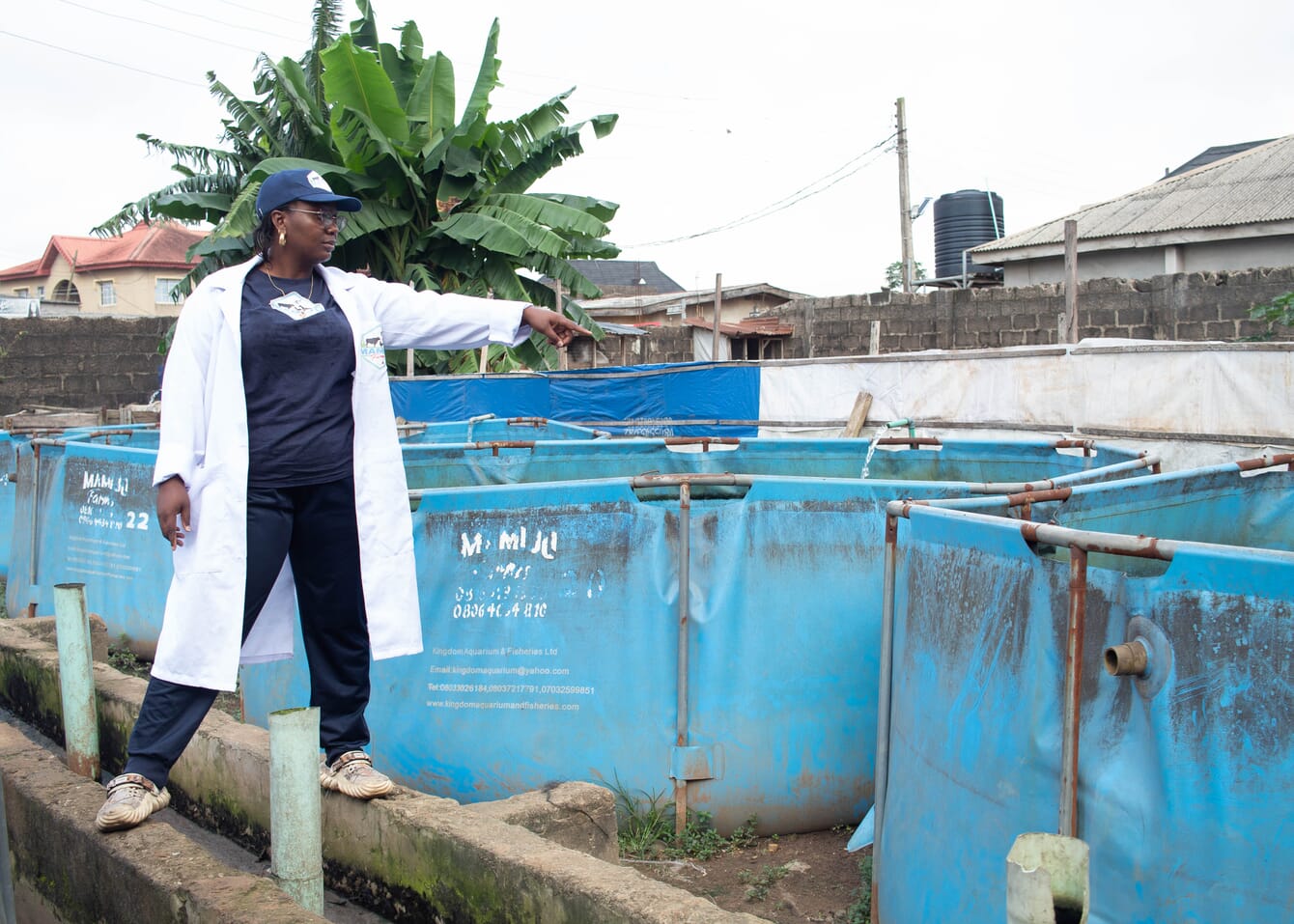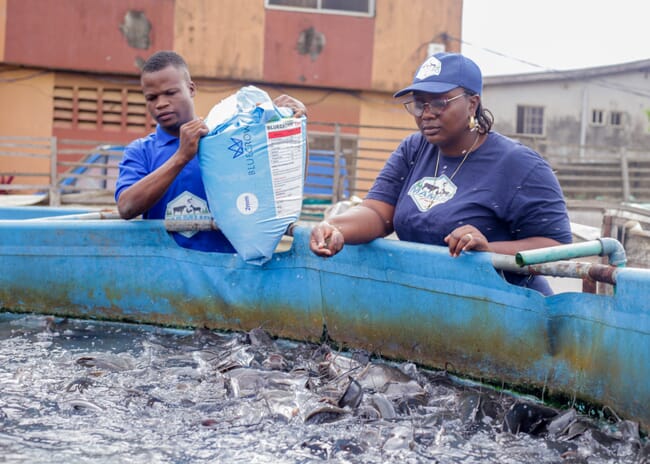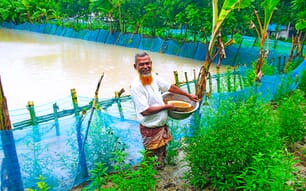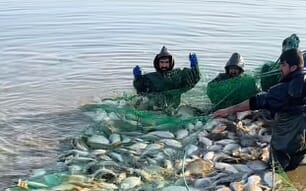
Can you tell me a bit about your background?
Mamijo Farms was established in 2017 by my husband – Olushola Giwa, who is the CEO/chairman – and I. Before then, we both had our separate businesses. I had my own shops and owned different businesses including selling kerosene and biscuits in large quantities, while my husband was working at Eko FM, a radio station in Lagos. But all those businesses were not giving us the funds we needed, so I joined a fish farming training course at the Ministry of Agriculture in Lagos.
After the training, we gathered resources from our separate businesses and started fish farming with just five ponds and about 10,000 fingerlings. Not long after, we increased the number of ponds to 15.
However, we ran at a loss for one year and three months and we lost everything due to lots of factors including people stealing from us, buying the wrong feed, taking advice from people without checking to see whether it will work for us, and not following what I learned at the ministry. We lost 12 million naira (€7,429), but a loss is always a lesson.
So we closed the farm and started again after Covid. Investors came in and that’s how we started to expand. We now have three branches in Lagos state, one of which is an academy.
What are your key focus areas?
Grow-out production. That’s where the market is for me. We have a market for sale monthly. We have scheduled our farm to have between 8 and 10 tonnes every month for sale. As we are selling, we are stocking.
We also run an investment programme where we give investors 2.5 percent on any amount they invest monthly. We have been doing this for over three years. Now, we have five major investors.
What sort of production system do you operate?
We have been using tarpaulin ponds since the beginning. In each farm, we have two industrial boreholes. One industrial borehole takes two pumping machines. Each farm has four pumping machines.
We have 100 ponds in all three branches. The third branch is an academy, where we train upcoming fish farmers. The academy opened in June. We had the first lady of Lagos State, Ibijoke Sanwo-Olu, at our farm recently. She brought 250 children for training.
I run my farm mainly to make money and we stock more than we expect to harvest, to give room for cannibalism or mortality. So we don’t count the fish; we weigh the fish and we weigh the feed.
We stock 30,000 fingerlings in each farm. We have nursery ponds. We stock 5,000 in each nursery pond monthly. After two weeks, we sort them and divide them into two and then move them to another pond.

What is the capacity of your hatchery?
We produce between 10,000 and 15,000 fingerlings in a month. But sometimes production might not meet up to our needs, so we sometimes source juveniles externally too.
What were the biggest challenges of setting up your own aquaculture business?
Capital is the biggest challenge, as well as getting a good space and location. I want to be in town because that’s where the market is. If you are far off, you will need to factor in transportation and lots of things.
Another challenge is theft. There was a day last year that we stocked 850 kg in one sale pond. That day alone, we almost lost 360 kg of fish, worth about N756,000 (€462). We caught the thieves.
If we had not weighed the fish previously, we would not have known that people coming to buy were stealing from us.
What is your biggest worry at work?
My biggest worry is a disease outbreak. We have experienced that before. A lot of factors can cause that, including temperature – especially warm weather – and a lack of oxygen in the ponds. Three months ago, we experienced a disease outbreak in one of the ponds and we lost 350 kg of fish.
What does a typical day at your farm involve?
When we started, when it was just my husband and I, we got to the farm by 6 AM. The routine was to change the water and feed the fish. We then went home in the afternoon and returned by 6pm to feed again.
Now, we have seven permanent staff, 10 contract staff, and one IT student. So we get to the farm by 7am to supervise every activity and ensure everything that needs to be done is done. I also feed the fish before leaving by 11am for the academy, where I spend the rest of the day.
During the sales periods, which take place in the second half of each month, we are at the farm every day from morning until the day’s sales is over.

What is your monthly production, and how much is this worth?
We sold 9.3 tonnes in May, which gave us over 21 million naira (€13,000).
Are there any individuals or organisations who you have found particularly inspiring?
Yes, Femi Ilesanmi Eniola, the founder and CEO of Osky Catfish. I find him inspirational because he is into large-scale production, exporting, and making [catfish] sausages. I see him more like a mentor and I want to see myself in that kind of large-scale production.
What work-related achievement are you most proud of?
Being able to sell the volumes I want to sell. Our target in a month is between eight and ten tonnes.
If you could solve one issue in the aquaculture industry, what would it be?
The electricity
problem: every two days, we spend at least N80,000 (€49) because we need to pump water 24 hours a day.
Where do you see your business in ten years?
I want to have at least one fish farm in all the 20 local government areas in Lagos state.
What would be your advice to other fish farmers?
Start small and practice. Listen to just your mentor. Be careful with the advice you take from people, because not all will work for you. Keep a good farm record. It is important you know what you earn after the expenses. Lastly, fish farmers must have CCTV, because of those who come to steal.








